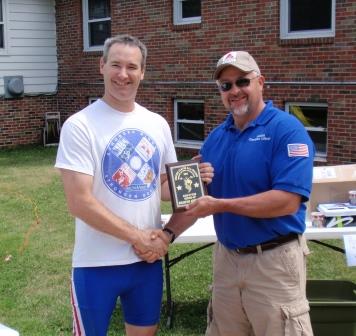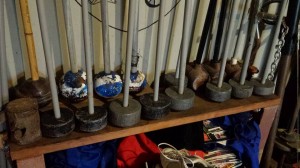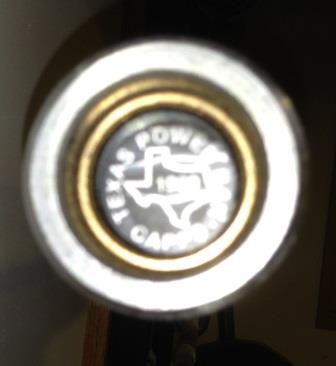by Thom Van Vleck
MEET ANNOUNCEMENT: BIG T’S BIRTHDAY BASH OTSM
This May I turn 50 years old. My wife asked me what I wanted to do. Well, I love to throw, lift, and eat with family and friends. So I will be hosting a Scottish Highland Games at my gym near Greentop, Missouri as well as an USAWA OTSM meet! You may enter both if you like. There will be burgers and brats grilled for lunch. The Highland Games will begin at 10:00am while the OTSM will follow immediately after around 3 pm. Weigh ins will start at 9:00am or immediately before the lifting starts. There will be miniature anvils for awards. One difference with this meet is that there will be two champions. One will be decided using formulas while the other will be declared on most weight lifted.
MEET DIRECTOR: Thom Van Vleck
DATE: May 31, 2014
LOCATION: JWC Training Hall, 23958 Morgan Road, Greentop, MO, 63546
A special Iron Man award will be given to the combined thrower and lifter.
Following the throwing and lifting, weather permitting, there will be a bonfire and evening festivities.
Three lifts will be contested. Two are tried and true OTSM lifts while the third is a brand new lift that will be tried out for the first time.
The Cyr Press
Any dumbbell with a handle diameter between 1 inch and 1.5 inches is allowed. The dumbbell may be brought to the shoulder in any manner, but must come to the shoulder before going overhead. This includes using two hands. Once at the shoulder, the dumbbell is taken overhead with only one hand anyhow. The other arm/hand is not allowed to touch the lifting arm during the overhead portion. The feet are allowed to move. If the lifter misses with one arm, the dumbbell may be switched to the other arm during the attempt, but the arm used must be selected at the shoulder. A time limit of 1 minute is allowed for the attempt. The dumbbell may be set down or dropped during the attempt. If the overhead portion of the lift is missed, it may be restarted at the shoulder. Once the dumbbell is overhead motionless with arm straight, the legs straight and feet in line with the torso, an official will give a command to end the lift.
Dumbbell to the Shoulder
A dumbbell will be taken from the floor to the shoulder using any method the lifter wants to employ. The dumbbell may be lifted with two hands, continental style, or may be rested on the belt during the lift by any part of the dumbbell. Hands may grip the plates, bar, collars, or any part of the dumbbell. Any size plate may be loaded onto the dumbbell. The lift is completed when the lifter is standing upright, with the dumbbell resting on the shoulder, and the lifter demonstrating control. Both hands may remain on the dumbbell to complete the lift, or with one hand or both hands off the dumbbell. A time limit of 1 minute is given to complete the lift. An official will give a command to end the lift.
Thor’s Hammer (NEW LIFT!)
A 2″ vertical bar that conforms to the rules for the 2″ vertical bar lifts (2″ in diameter and no more than 18″ long with no knurling) will be used. Just as with a vertical bar lift, the bar may be gripped by any grip with only one hand near the top of the vertical bar. In addition, the hand must not be touching any weights or collars used to secure the weights. The lift will begin at the lifter’s discretion. There will be a one minute time limit to complete the lift. Once the lifter chooses to use the left or right hand, the other hand will not come in contact with the weight. If the lifter misses an attempt they may switch hands but only with the weight resting on the lifting area. The lift must be one continuous motion from the floor to a locked out position with no press out. The lifter may choose to snatch or swing the weight. The forearm must not touch the weight at any time. The lifter may move the feet and body to adjust to the lift like a snatch lift. The lift is considered complete when the lifter is in an upright position with the knees and elbow locked, feet in line with the torso with the weight under control. At which time the official will give the command to end the lift.



